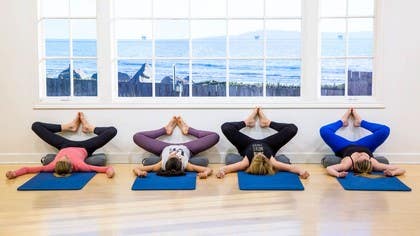
Can I Benefit from Doing Pilates for Arthritis?
According to the U.S. Centers for Disease Control and Prevention (CDC), one in four people in the United States suffers from arthritis, or stiffness of one or more joints. The most common form of arthritis is osteoarthritis, or damage to a joint's cartilage. Think of cartilage as a kind of shock absorber. When cartilage is damaged, it results in bone grinding on bone. This is what causes arthritis pain and restricted movement, which in turn is responsible for a cascade of other issues, such as being unable to work or perform daily activities.
Benefits of Pilates for Arthritis
It may seem counterintuitive, but physical activity can actually decrease arthritis pain. The expression "move it or lose it" applies here. Movement helps keep the pain and stiffness of the joints at bay, much like motor oil lubricates the engine of your car. We also know that exercise improves quality of life, increasing confidence, lifting our mood, and lessening depression. The CDC recommends at least 150 minutes of moderate-intensity physical activity each week for adults with arthritis. That number may seem daunting, but you can break it up into little exercise bites throughout your day or week.
It's important to choose the right kind of exercise, so as not to worsen your arthritis pain. With osteoarthritis, as well as with other forms of arthritis such as rheumatoid arthritis, anything jarring to the joints is out. Instead, look for low-impact exercises that work on maintaining range of motion for the joints, as well as stretching, breathing, and getting the heart rate up.
Why Pilates is a Great Choice for People with Arthritis
For these reasons, Pilates is a good choice for people with arthritis. Pilates emphasizes core stability, which helps with balance, as well as spinal flexibility, which helps you perform the activities of daily life, from driving to reaching objects on high shelves. In addition, Pilates helps to maintain or improve range of motion of the joints, which is so important if you have arthritis.
Pilates exercises are performed on a Mat or on specially designed equipment, also called Pilates apparatuses, that use resistance springs to strengthen the body in a balanced and safe way. Footwork and Leg Circles exercises on the Pilates Reformer machine or the Leg Springs on the Cadillac, for example, strengthen the muscles surrounding the knee, hip, and ankle joints without impact. Similarly, the arm spring series and the Push Through and Roll Back exercises on the Pilates Tower or Cadillac strengthen the muscles of the shoulder girdle. These large and small muscles help support the joints and encourage more efficient movement.Getting Started with Pilates When You Have Arthritis
It is always best to check with your doctor before beginning any exercise program. Once you receive clearance from your doctor, the ideal scenario would be to find a qualified teacher in your area who has experience working with people with arthritis. If possible, take some private lessons. The instructor can offer tips just for you and your body. You'll learn how to modify exercises if you choose to progress to group classes, semi-private sessions, or even online workouts. Be patient while you are starting out. It's better to start slowly and be consistent than to overdo it and get injured or burnt out. A good place to begin is with Pilates Anytime's Begin Pilates series.
Pilates Modifications for Arthritis
If you are in a group class setting, arrive early to let the instructor know about any contraindications (exercises or movements that your physician has told you to avoid, or that hurt). You may find that you need to modify some of the exercises to suit your body. For example, if you have arthritis in your knees, you may have to avoid deep flexing of the knee (such sitting on your heels to rest in Child's Pose). You can place a rolled up towel behind your knees or simply choose another position to stretch the lower back, perhaps in a standing or supine position. A skilled teacher will usually offer alternatives during the class. You can also ask us via email or in the forums on our website.
Warming up before exercising can help facilitate movement and minimize pain. That could mean taking a walk before class, or even taking a hot bath or shower. Listen to your body. Do not push through pain. Stop, take a rest, or try a different exercise or a modified version of the exercise.
It's normal to experience discomfort initially, so don't get discouraged if you feel achy after your first few workouts. If, however, you don't start to feel better, or if you feel worse, reconsider your workout and talk to your doctor about finding a form of exercise that is a better fit.
Comments
Mary L lagrange Il
It's a tricky thing offering suggestions for exercises in words over a forum post. There is a lot of room for misinterpretation. You have inspired us to put together a list of common modifications that may apply to several conditions. We will video these and put them up on the exercises page. Please be patient with us, in getting them up, but know that it is on the list of things to do. In them meantime, I suggest you ask the question in the Instructors corner. We have many subscribers like yourself who teach and have similar questions. I think this is a great one to spark a nice exchange.
Thank you for your question.
You need to be a subscriber to post a comment.
Please Log In or Create an Account to start your free trial.




















